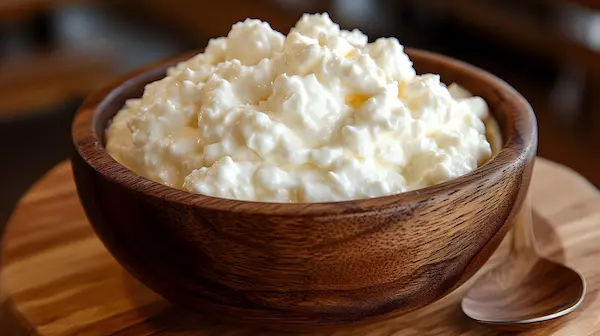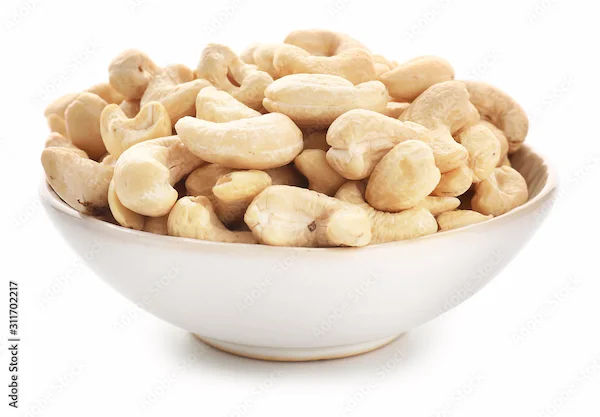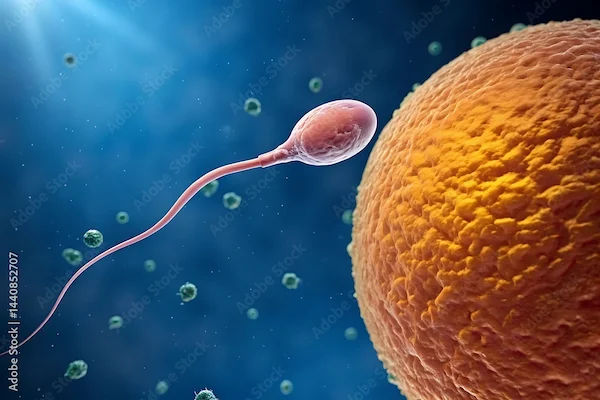Understanding the Vital Connection between Iron and Blood Haemoglobin: Management and Optimising Health
Learn about the crucial connection between iron and blood haemoglobin in the body. Discover iron’s role in haemoglobin formation, causes of iron deficiency anaemia, treatment options and prevention strategies to maintain optimal iron levels.

Written by Dr.Sonia Bhatt
Last updated on 3rd Jul, 2025

Introduction
Haemoglobin is made of a compound called heme and a protein called globin. It is a crucial protein that is found in red blood cells. It is responsible for transporting oxygen from the lungs to tissues and organs throughout the body and returning carbon dioxide to the lungs for exhalation. Each haemoglobin molecule contains iron that binds to oxygen. This facilitates the critical exchange that sustains life and supports cellular function. Without haemoglobin, cells would be deprived of the oxygen necessary to perform essential metabolic processes, which may lead to severe physiological dysfunctions like anaemic hypoxia.
What is a Blood Haemoglobin Test?
A blood haemoglobin test is usually performed to determine the amount of haemoglobin in the body. If the haemoglobin level is low, the red blood cell levels are likely to be lower than the normal range. This is called anaemia. If the haemoglobin level is high, it could be a result of several factors, such as health conditions, environmental factors, and medications.
A haemoglobin test can reveal many things about a patient. It can be done to diagnose and monitor medical conditions or determine whether a patient is anaemic as part of an overall health check-up.
Connection between Iron and Blood Haemoglobin
Around 70% of the iron found in the red blood cells is in haemoglobin. About 6% of the iron found in the body is a component of certain proteins, including cytochromes, myoglobin, and enzymes that help with energy metabolism and respiration. Around 25% of the iron in the body is stored in the form of ferritin. The bloodstream circulates this protein across all body tissues, cells, and organs. Low iron levels in the body may lead to low haemoglobin levels. When iron levels are depleted, it is called iron depletion, which can lead to iron-deficient erythropoiesis. The last stage of iron depletion in the human body is known as iron deficiency, medically termed as anaemia.
Importance of Iron in the Formation of Haemoglobin
Iron is a key component in the production of haemoglobin. Without adequate iron, the body cannot produce enough healthy red blood cells to carry sufficient oxygen, which may lead to conditions such as iron deficiency anaemia. Thus, it is essential to maintain proper iron levels for energy production, cognitive function, and overall health. Iron not only plays a crucial role in haemoglobin synthesis but also plays a vital role in other bodily functions, which include muscle metabolism, DNA synthesis, and immune system performance.
The body absorbs iron from food in the gastrointestinal tract. It stores iron in the liver as ferritin, and when it needs iron to make new red blood cells, it releases iron from the liver.
To maintain iron levels in the body, individuals can do the following:
Eat foods rich in iron, such as fish, beans, red meat and leafy greens.
Take multivitamins with iron if one donates blood frequently.
Speak to a healthcare provider about iron supplements.
Avoid soaking or fermenting phytate-rich foods like beans, whole grains, nuts, seeds, and cereals before eating them.
Other tips include avoiding tea with food or straight after a meal.
Impact of Iron on Haemoglobin Levels
Iron is integral to haemoglobin’s ability to bind with oxygen. The iron within haemoglobin molecules forms a complex with oxygen, which allows the red blood cells to efficiently transport oxygen throughout the body. This interaction ensures tissues receive the oxygen they need for metabolism and energy production. Without sufficient iron, the binding process may get compromised, leading to reduced oxygen transport and subsequent symptoms of anaemia, such as fatigue and shortness of breath.
Normal Ranges of Haemoglobin
Normal ranges of haemoglobin vary depending on the gender and age of a person.
Women: 12.1 to 15.1 grams per decilitre (g/dL)
Men: 13.8 to 17.2 g/dL
Children: 11 to 16 g/dL
To maintain healthy haemoglobin levels, men (age group of 19–50 years) must consume 8 mg of iron and women (age group of 19–50 years) must consume 18 mg of iron every day. Vegetarians might need almost twice as much iron as mentioned above because the body doesn’t absorb non-heme iron in plant foods or heme iron in animal foods.
Consequences of Iron Deficiency on Haemoglobin
Insufficient iron levels may decrease the production of haemoglobin, which may result in reduced oxygen delivery to tissues. This can cause fatigue, shortness of breath, weakness and other symptoms associated with anaemia. Chronic iron deficiency can significantly impair performance, cognitive function and immune response. Untreated iron deficiency, over time, can lead to severe health complications such as heart problems, developmental delays in children, and complications during pregnancy.
Consult Top Doctors for Your Anaemia Symptoms
Causes of Iron Deficiency Anaemia
Dietary factors that can contribute to low iron are:
Inadequate Iron Intake: Diets low in iron-rich foods like poultry, fish, red meat and leafy green vegetables can lead to deficiency. Vegetarian and vegan diets, though healthy in many aspects, may lack adequate heme iron, which is more readily absorbed by the body.
Poor Dietary Choices: Excessive consumption of foods that inhibit iron absorption, like those high in calcium or phytates (found in whole grains and legumes), can contribute to low iron levels. Also, frequent consumption of tea or coffee that contains polyphenols can reduce iron absorption.
Conditions that affect iron absorption and metabolism include:
Malabsorption Disorders: Diseases such as celiac disease, Crohn’s disease, and atrophic gastritis can impair the body’s ability to absorb iron from the diet.
Increased Iron Demand: Children’s growth spurts, periods of rapid development, and pregnancy require increased iron. If the demand is unmet, it may result in deficiency.
Chronic Blood Loss: Ulcers, gastrointestinal bleeding and heavy menstrual periods are conditions that can deplete iron stores.
Treatment Options for Iron Deficiency
Increasing dietary intake is crucial in treating iron deficiency.
1. Dietary Sources
Some iron-rich foods include:
Iron-Fortified Foods: Several breads, cereals, and plant-based milks are fortified with iron and can benefit those at risk of deficiency.
Heme Iron Sources: Heme iron is found in animal products like poultry, red meat, and fish, which are more easily absorbed by the body. Liver and organ meats are also rich in heme iron.
Non-heme Iron Sources: It is found in plant-based foods like lentils, beans, tofu, spinach, and fortified cereals. Vitamin C-rich foods like tomatoes, citrus fruits, and bell peppers can enhance absorption.
2. Oral and Intravenous Iron Supplementation
Other supplements include:
Oral Iron Supplements: These are commonly prescribed to boost iron levels and are often in the form of ferrous sulphate, ferrous fumarate or ferrous gluconate.
Vitamins and Minerals: Folic acid and vitamin B12 supplements may be recommended alongside iron in a few cases.
Intravenous Iron Therapy: It is recommended for those who cannot tolerate oral supplements, have a severe deficiency or have conditions affecting iron absorption.
Prevention Strategies for Maintaining Optimal Iron Levels
Below are a few prevention strategies:
It is essential to include both heme and non-heme iron sources in the diet.
During iron-rich meals, one can pair iron-rich foods with vitamin C and avoid excessive intake of inhibitors like calcium, tea, and coffee.
Also, an individual must only take iron supplements when prescribed by a healthcare professional.
Conclusion
Iron plays a critical role in the formation and function of haemoglobin, facilitating the transport of oxygen throughout the body. Both iron deficiency and iron overload can have significant health consequences, which highlights the importance of balanced iron levels. Thus, maintaining optimal iron levels is crucial in maintaining overall health and well-being.
Consult Top Haematologists
Consult Top Doctors for Your Anaemia Symptoms

Dr Abilash Jain
General Physician/ Internal Medicine Specialist
12 Years • MBBS,DNB(FM),MNAMS,FIAMS,CCGMG(GERIATRICS),DGM (GERIATRICS),PGCD(DIABETES,BOSTON UNIVERSITY),FID(DIABETICS UK)CCEPC(PALLIATIVE CARE),CCCC(CRITICAL CARE)
Visakhapatnam
Apollo Clinic Vizag, Visakhapatnam

Dr.sanchayan Mandal
Oncologist
17 Years • MBBS, DrNB( MEDICAL ONCOLOGY), DNB (RADIOTHERAPY),ECMO. PDCR. ASCO
Kolkata
Dr. Sanchayan Mandal Oncology Clinic, Kolkata

Dr. E Prabhakar Sastry
General Physician/ Internal Medicine Specialist
40 Years • MD(Internal Medicine)
Manikonda Jagir
Apollo Clinic, Manikonda, Manikonda Jagir
(125+ Patients)

Dr. Ramalinga Reddy
General Physician
5 Years • MBBS MD General medicine
Bengaluru
PRESTIGE SHANTHINIKETAN - SOCIETY CLINIC, Bengaluru

Dr. Prabu P
Haematologist
29 Years • MBBS, MD(Gen.Med.)(JIPMER) , MRCP, Dip RCPath, FRCPath, CCT(U.K), Haemato - Oncology.
Chennai
Apollo Hospitals Greams Road, Chennai
(475+ Patients)
Consult Top Haematologists

Dr Abilash Jain
General Physician/ Internal Medicine Specialist
12 Years • MBBS,DNB(FM),MNAMS,FIAMS,CCGMG(GERIATRICS),DGM (GERIATRICS),PGCD(DIABETES,BOSTON UNIVERSITY),FID(DIABETICS UK)CCEPC(PALLIATIVE CARE),CCCC(CRITICAL CARE)
Visakhapatnam
Apollo Clinic Vizag, Visakhapatnam

Dr.sanchayan Mandal
Oncologist
17 Years • MBBS, DrNB( MEDICAL ONCOLOGY), DNB (RADIOTHERAPY),ECMO. PDCR. ASCO
Kolkata
Dr. Sanchayan Mandal Oncology Clinic, Kolkata

Dr. E Prabhakar Sastry
General Physician/ Internal Medicine Specialist
40 Years • MD(Internal Medicine)
Manikonda Jagir
Apollo Clinic, Manikonda, Manikonda Jagir
(125+ Patients)

Dr. Ramalinga Reddy
General Physician
5 Years • MBBS MD General medicine
Bengaluru
PRESTIGE SHANTHINIKETAN - SOCIETY CLINIC, Bengaluru

Dr. Prabu P
Haematologist
29 Years • MBBS, MD(Gen.Med.)(JIPMER) , MRCP, Dip RCPath, FRCPath, CCT(U.K), Haemato - Oncology.
Chennai
Apollo Hospitals Greams Road, Chennai
(475+ Patients)
.webp)



